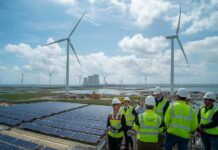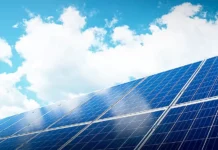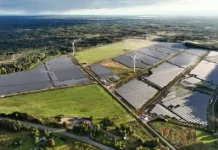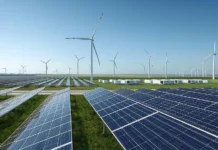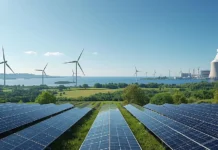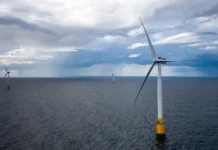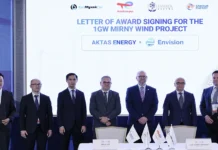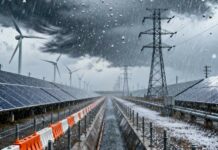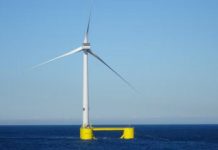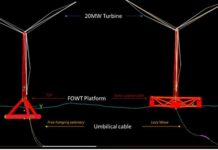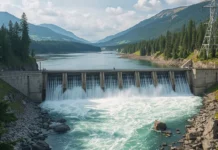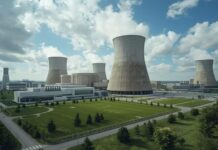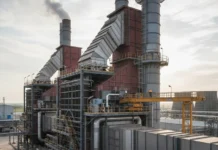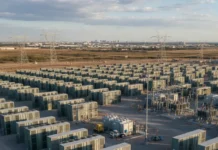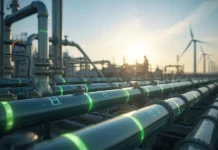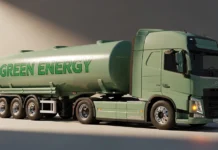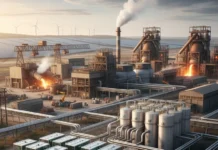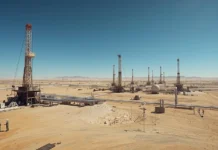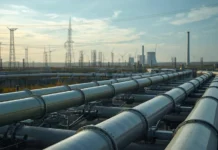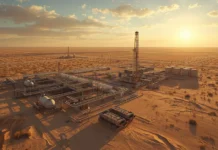The Eight Energy Trends Defining 2025
The year 2025 is significant in the history of the global energy sector. The energy business is witnessing dramatic upheavals as environmental concerns, technological innovation, and altering geopolitical environments become more widespread. These changes are affecting not only the way energy is produced, stored, and consumed, but also society’s approach to sustainability and economic resilience. Here are the most important eight energy trends for 2025, as the globe prepares for a new era of clean, efficient, and egalitarian energy.
AI in Energy Management and Infrastructure
Energy infrastructure is still being revolutionised by artificial intelligence (AI). Forecasting, generating, and distributing energy demand with previously unheard-of precision is now possible because to predictive analytics and intelligent optimisation technology. Businesses such as Shell are using AI to locate EV charging stations strategically and investigate biofuel deposits. This trend is expected to improve energy grid efficiency, decrease downtime, and offer real-time supply and storage solutions.
Incorporating renewable energy sources into current grids also requires AI. AI guarantees a smooth and effective switch to renewable energy systems by identifying trends and forecasting variations. Energy ecosystems driven by AI will be essential to speeding global decarbonisation initiatives in 2025.
Innovations in Battery Technology and Energy Storage
Energy storage is the foundation for renewable energy adoption. Breakthroughs in solid-state and flow batteries are making renewable energy storage more viable. These innovative solutions handle the intermittent issues posed by solar, wind, and tidal energy. Furthermore, thermal energy and compressed air storage techniques are developing as viable alternatives to traditional storage systems.
For example, in China, flow batteries are already offering large-scale energy storage options. By 2025, efficient, scalable storage technologies will close the gap between renewable energy supply and constant availability, resulting in a greener global energy landscape.
Decentralized Energy Production
Decentralized energy systems are revolutionizing the energy production paradigm. Rather than using large, centralized plants, microgrids and community-situated renewable power systems are on the rise. In remote and rural areas, this paradigm is particularly significant, lowering reliance on national grids and improving energy resilience.
With the integration of AI, these decentralized grid infrastructures maximize energy sharing and consumption, maximizing the usage of renewable energy sources such as solar and wind. Decentralized energy hubs will increase in 2025 to represent a transition to greater fairness and resilience in energy access globally.
Geopolitical Impact on Energy Security
The geopolitical situation is closely linked to energy security. As confrontations increase and international tensions rise, countries are attempting to diversify their energy supplies and minimize imports from politically unstable areas. This has led to major investments in local energy production and emerging supply routes.
Energy security issues by 2025 will most likely propel public-private alliances between governments and the private sector. Such alliances will focus on clean energy infrastructure to keep countries energy-independent while limiting greenhouse gas emissions.
Small Modular Reactors and Nuclear Energy
With the creation of Small Modular Reactors (SMRs) and improvements in nuclear fusion technology, nuclear energy is returning. SMRs are a desirable alternative to fossil fuel power plants since they are smaller, safer, and more affordable than conventional reactors.
A reliable, low-carbon energy source is provided by combining SMRs with renewable energy sources. It is anticipated that nuclear energy and fusion technology advancements will make a substantial contribution to clean energy targets by 2025. Regulatory issues and waste management difficulties will still need to be addressed, though.
Addressing Energy Inequality
Energy disparity is a worldwide imperative, with billions not having access to consistent electricity. It will be a top priority in 2025 to tackle energy poverty. Solar-powered microgrids and affordable renewable technologies are being introduced to close the gap.
These initiatives not only seek to enhance living conditions in underprivileged areas but also help drive global economic growth. Through the increase of access to clean energy, stakeholders are driving inclusivity in the global energy transition.
Renewable Energy and Green Hydrogen
The search for fossil fuels to be replaced by clean energy is unrelenting. By 2025, growth in renewable energy technology, such as integrated solar panels and floating wind farms, will lead the energy front. Green hydrogen is also transforming industries like steel manufacturing and transportation.
Through the use of renewable energy to produce hydrogen, green hydrogen provides a carbon-neutral alternative to heavy industry. It will be important to scale these technologies in order to lower industrial emissions and reach net-zero targets.
The Human Factor
The fate of the energy transition, however, rests in the behavior of man. Customer readiness to adopt electric vehicles, join community energy schemes, and move to renewable resources will hold the key to how fast it happens. Awareness and education are the biggest drivers for this behavioral change.
Legislation will also be involved, but it has to be balanced to prevent a public outcry. Positively, 2025 will witness higher participation in international energy programs, as people understand the need to fight climate change through concerted efforts.
Conclusion
The eight energy trends shaping 2025 unveil a revolutionizing era in the world’s energy industry. Ranging from AI-optimized optimization and revolutionary battery technologies to decentralized networks and green hydrogen usage, these trends speak volumes about the sector’s capability to turn challenges into opportunities.
Although issues like energy inequality and geopolitical conflict still exist, the intersection of innovation, investment, and human determination puts the world in a position to reach a sustainable energy future. As the trends continue to evolve, 2025 is poised to be a transformative year for defining the course of global energy systems and a cleaner, more just world.


